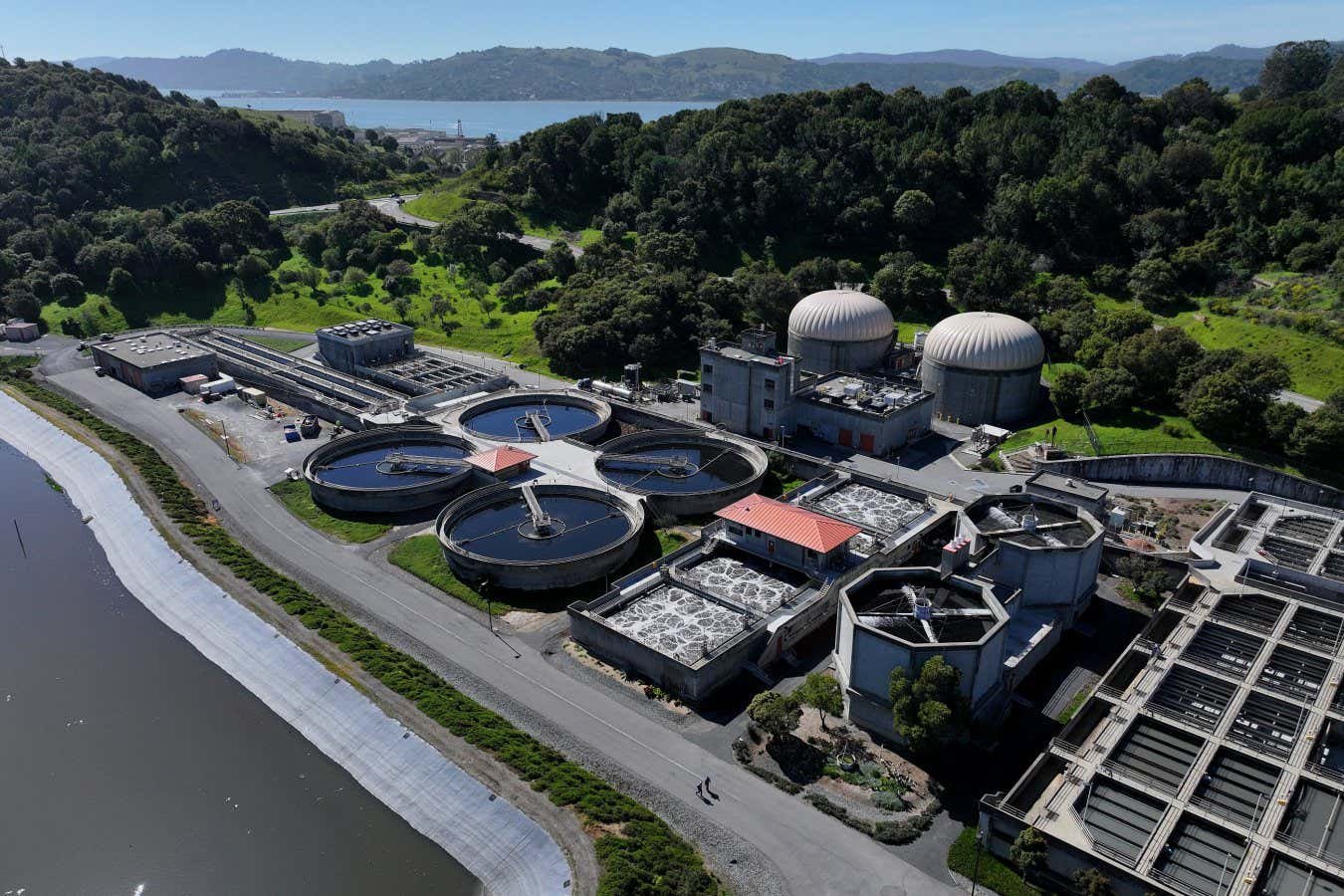A wastewater treatment plant in California
Justin Sullivan/Getty Images
Wastewater treatment plants are a major source of PFAS contamination in drinking water in the United States—they discharge enough “forever chemicals” to raise concentrations above safe levels for an estimated 15 million people or more. They can also release long-lasting prescription drugs into the water supply.
Although these plants clean the wastewater, they do not destroy all the pollutants that are introduced upstream – and the chemicals that remain are released back into the same waterways that supply the drinking water. “It’s a funnel into the environment,” says Bridger Ruyle of New York University. “You capture a lot of stuff from a lot of different places and it’s all published in one place.”
Perfluoroalkyl and polyfluoroalkyl substances (PFAS) are of particular concern because they contain carbon-fluorine bonds, which make them extremely persistent in the environment. Regular exposure to several types of PFAS has been linked to an increased risk of many health problems, from liver damage to various forms of cancer. The US Environmental Protection Agency (EPA) recently set strict drinking water limits for six of the best-studied PFAS.
Wastewater treatment plants are a known source of PFAS contamination in the sewage sludge they produce as a byproduct, which is sometimes used for fertilizer. To find out whether similar contamination remains in the treated water, Ruyle and his colleagues measured the concentration of PFAS and other molecules that contain carbon-fluorine bonds in wastewater at eight large treatment plants around the United States.
Their findings suggest that wastewater treatment plants across the United States discharge tens of thousands of kilograms of fluorinated compounds into the environment each year, including a significant amount of PFAS. When treated wastewater is discharged from a facility, it mixes with natural water in rivers and lakes. “It will create a downstream drinking water problem,” says Ruyle.
Applying these numbers to a model of the US drinking water system, the researchers estimated that wastewater could raise concentrations of PFAS above EPA limits in the drinking water of about 15 million people. During droughts, when there is less natural water to dilute the sewage, the model suggests concentrations will rise above the limit for as many as 23 million people. And Ruyle says these may be conservative estimates — their model assumes the natural water doesn’t already contain PFAS.
“It shows that wastewater treatment plants are really important sources of these compounds,” said Carsten Prasse of Johns Hopkins University in Maryland, who was not involved in the study. There are ways to remove or destroy PFAS in water, and several drinking water facilities are installing such systems, but currently “our wastewater treatment plants are not set up to handle this,” he says.
Forever chemicals alone would be a problem, but the researchers also found that PFAS made up only a small portion of the total volume of fluorinated chemicals discharged from the facilities. Most were not PFAS at all, but other compounds used in common drugs, such as statins and SSRIs. These drugs are also of concern to ecosystems and people.
“Another person could be drinking a cocktail of fluoride-containing prescription drugs,” says Ruyle. However, he says the consequences of long-term exposure to low doses of such compounds are not well understood.
“We need to start conversations about whether we should be using a lot of fluoride in pharmaceuticals,” says Ruyle. Fluoridation is widely used in medicines to increase their effect in the body, but “prevention of widespread chemical pollution should also be important”, he says.
Subjects:
